#mirrorless camera lenses
Explore tagged Tumblr posts
Text
Nikon Full Frame Mirrorless Camera for Photography - Grand Stores
Experience luxury shopping at its finest on Grand Stores Online Shop. Uncover an exquisite array of premium products, from fashion and electronics to home essentials. Elevate your lifestyle with quality and style. Explore, indulge, and shop with confidence at the epitome of elegance - Grand Stores. Your gateway to a world of sophistication awaits. Visit https://shop.grandstores.ae/

#fujifilm full frame mirrorless#fujifilm mirrorless camera#medium format video camera#medium format mirrorless cameras#medium format digital camera#full frame mirrorless camera#instant photo camera#mirrorless camera lenses#mirrorless cameras#mirrorless cameras and lenses
0 notes
Text
Buy Premium Quality Interchangeable Camera Lenses | AVC Store

Looking for premium quality interchangeable camera lenses? Look no further than AVC Store! We offer a wide selection of high-quality lenses from top brands such as Canon, Nikon, Sony, Sigma, and more. Our lenses range from wide-angle to telephoto, and everything in between, to help you capture the perfect shot in any situation. Our knowledgeable staff are always on hand to help you find the perfect lens to suit your needs and answer any questions you may have. In addition, we offer competitive prices and a range of financing options to help you get the equipment you need at a price that fits your budget. So why wait? Visit AVC Store today and buy the premium quality interchangeable camera lens you've been looking for!
#interchangeable camera lenses#mirrorless camera lenses#sony mirrorless camera#digital camera lenses
0 notes
Video
Going in for a Sip by Veit Via Flickr: A female Anna's Hummingbird going in for a sip in our backyard
#1.4x TC#400mm#Camera#Canon 400mm#Canon 400mm f5.6/L#Canon EF 400mm f/5.6L USM#EF 400mm f/5.6L USM#EF lens#EF lenses#Extender#Fringer adapter#Fuji#Fuji X-H2S#Fujifilm#Fujifilm X-H2s#Lens#Mirrorless#Objektiv#Photo#Teleconverter#X-H2#X-H2s#Bayfront Meadow#Bayfront Park#CA#California#Hauke Park#Marin#Marin County#Mill Valley
7 notes
·
View notes
Text
no bc i’ve taken so many film classes. had this explained so many times. i understand how shadows work. HOW TF ARE THE COLORS HOW DOES THAT WHY IS THIS THIS DOESNT LOOK REAL THIS LOOKS PHOTOSHOPPED TO ME
i took 3 years of film classes and i still don't fucking understand how the camera obscura works. thats magic to me idc
#i’m a film major#it’s a regular tag now ig#i’m simply gonna ignore the science#and just be happy it works so i can make fun images come up on silly little screens#kind of unrelated but how tf do mirrorless cameras work if all lenses use the concept of camera obscura
142K notes
·
View notes
Text
the amount that camera gear costs vs the amount i make as a photographer makes me wanna kms
#im so mad my shutter broke#i could either spend like 400 to get it repaired and be without a camera for two months and potentially need it repaired again in the future#or i could spend 1400 for a whole new camera that would be my exact camera but mirrorless#or i could downgrade my camera and only spend 1000#the camera bodys 800 but i have to spend another 100 for an adapter bc all my lenses are for a mirrored camera#i WANNA DIE!!!!!!!!!#i dont even fucking like this job fuckin hell#i wanna quit but i need to do something cuz the idea of not having ANY working camera……. thats diablocal for me#what if my neighborhood barred owl comes back and i dont have a camera?? i cant not replace it#but fucking hell i want a break#im so tired
1 note
·
View note
Text
The Best Lenses For Sony Full Frame Cameras: An Updated Guide
Two years after Sony announced its game-changing A7 and A7R series of full-frame mirrorless cameras, we created an exceptional guide to help photographers choose the best lenses for their gear. The Sony lens guide, thus, is an amalgamation of some of the most exciting lenses we have reviewed. But today, it gets an update. We all know how the camera industry works—there is a new iteration every…
#best#best sony lenses#full frame cameras#Full Frame Mirrorless#lens listicle#lens roundup#mirrorless#sony#sony lens guide#tamron#zeiss
0 notes
Text
#Photography#cameras#lenses#gear reviews#tutorials#discussions#community#techniques#equipment#photography tips#Camera reviews#Photography gear#Camera equipment#DSLR cameras#Mirrorless cameras#Photography accessories#Camera lenses#Photography techniques#Photo editing#Photography tips and tricks#Photography tutorials#Creative photography#Landscape photography#Portrait photography#Street photography#Wildlife photography#Travel photography#Product photography#Macro photography#Low light photography
1 note
·
View note
Text
Frogman's Camera Buying Guide
A few weeks ago someone asked if I could recommend an interchangeable lens camera (ILC) to supplement their smartphone photos and hopefully get better pictures of important things like vacations and pets.
I decided to go very extra with my response and due to that... I'm still not finished with it.
I'm worried I am letting this person down because they did not ask for a giant post explaining every detail about cameras in the history of forever.
So I am going to do a camera recommendation post without as much explanation and hopefully I can finish the giant post at some point in the near future.
If you want to take better pictures you are probably going to need a camera with a decent sized sensor, a fast lens, a tripod, and a flash.
The bigger sensor gives you more dynamic range so you can capture brighter and darker things in the photo.
A fast lens has a giant hole in the front that lets in a ton of light. That hole is called the aperture and the bigger it is, the better your photos in dark environments will be. So you will want something that does f/1.8 or f/1.4 (lower f-stop number = bigger hole = more light). This can also help you get a lot of cool background blur.
A tripod will help get you longer exposures without any blur from camera shake. Especially good for landscape photos.
And a flash is for taking photos of pets and other moving subjects when you are indoors and don't have a lot of light. A flash is an absolute game changer for indoor photos.
HOWEVER, never point it directly at your subject.
Point it at a large white ceiling or wall. The flash happens so fast that it freezes motion. It is how I got all of my indoor photos of Otis.
Here he was playing and being rambunctious and he is not blurry.
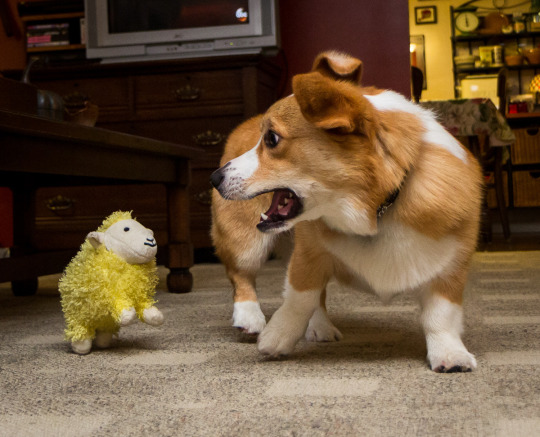
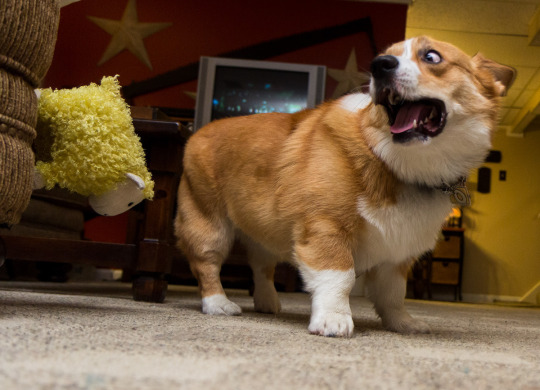
I used no special settings. I just stuck on a flash and pointed it at the ceiling and suddenly sheep are sticking to things.
Oh, and one other huge benefit of using a flash... you can take much better photos of pets with dark fur. So if you have a cute little void in your home, a flash can help you capture detail in their fur.
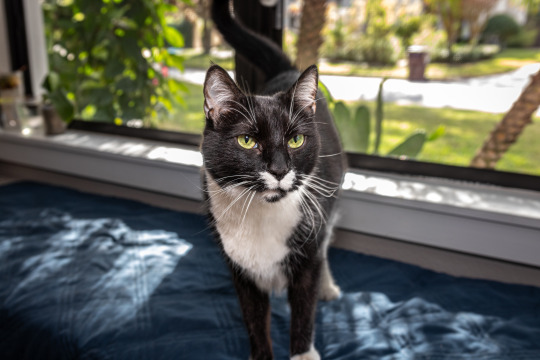
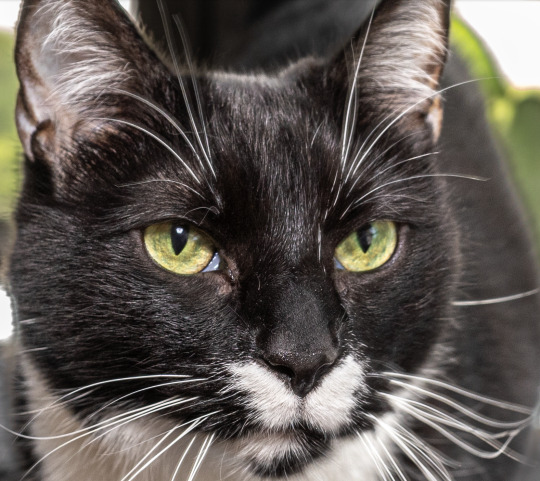
Just lift the shadow slider in your image editor and that beautiful fur will reveal itself.
If you get an ETTL or TTL flash, it will output the correct amount of light automatically. You can literally just put your camera in automatic mode, aim the flash at the ceiling, and press the shutter button.
Before I talk about recommendations I want to make one thing very clear.
GETTING A GIANT CAMERA WILL NOT AUTOMATICALLY GIVE YOU BETTER PHOTOS.
Aside from my flash aimed at the ceiling trick, a big boy camera is not a magic solution for better photos. In some cases, you might actually get *worse* photos than your smartphone. You need to learn the basic fundamentals of photography and you also need to learn some basic photo editing skills.
Smartphones employ powerful algorithms and computational processes to make every photo you take look as good as possible.
ILCs say, "Here is your RAW data, you figure out the rest."
You don't have to become an expert, but if you watch this free 6 hour photography course, that will ensure you have the knowledge needed to improve your photos.
youtube
Okay, let's get into the nitty gritty of buying a nice new old ILC.
If you are on a tight budget and cannot afford a fancy mirrorless camera, I would highly suggest a used DSLR. You can get them for very reasonable prices. And unlike just about every other modern technological gadget, cameras and lenses are built to last for decades. So I have no qualms about recommending used photography gear.
However, I do highly recommend using either KEH or MPB, as they have a long trial period and decent customer service. If something goes awry with your used gear, KEH has a 180 day warranty and MPB has a 6 month warranty. So there is much less of a risk than eBay or Facebook Marketplace. You pay a bit of overhead, but the piece of mind is worth it.
Before I start my recommendations I want to quickly explain the difference between APS-C and Full Frame camera bodies. (For brevity's sake I am going to omit Micro Four Thirds bodies as they are not typically geared toward beginner photography.)
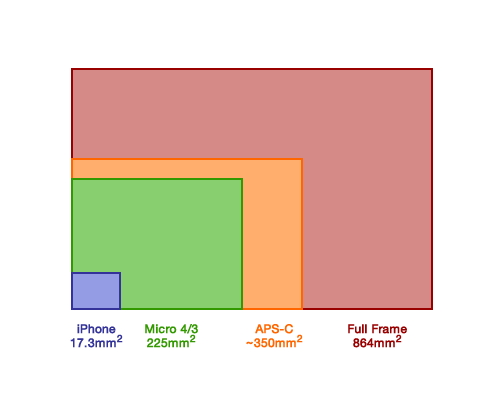
APS-C has a "crop" sensor. It is a bit smaller than full frame and does not perform as well in low light (more noise). However these bodies are cheaper and can still produce great photos. You can see above the sensor is still significantly larger than a smartphone. APS-C adds a 1.5x zoom to all lenses. This can be annoying in small spaces but advantageous for outdoor photography like wildlife and sports. You can use full frame lenses on a crop sensor body (within the same brand). APS-C lenses are usually cheaper but of lower quality.
Full frame has a larger sensor that will give you less noise in low light. It is also much easier to get background blur. Full frame also allows you to work in more cramped spaces. You *cannot* use APS-C lenses on a full frame body. However, the lenses meant for full frame cameras tend to be better quality in general.
If you can save up a little more and get a full frame body, I would recommend it. These bodies used to be geared more toward professional use, but since mirrorless cameras became popular, used full frame DSLRs have become much more accessible to those on a budget. Full frame cameras make it easier to get better results in challenging circumstances. And challenging conditions are really the main area where ILCs still kick a smartphone's ass.
For tight budgets I would recommend the following...
Canon or Nikon APS-C DSLR camera body
50mm f/1.8 lens (Nifty Fifty)
18-55mm APS-C lens (good for landscapes and portraits)
Yongnuo ETTL Flash
There are lenses called "superzooms" which can go from (as an example) 18-200mm or 70-300mm and other crazy focal lengths. That sounds fantastic and very versatile... but these are usually utter shite. You may be tempted to get one of these lenses hoping it can do everything you need, but there are no free lunches in lens land. Unless you are spending many thousands of dollars, the wider the focal range, the worse the lens will be.
When you stick to the 18-55mm range, you can be assured the images will be decent. And if you find yourself really needing a telephoto lens, you can save up and add it to your collection later on. The 18-55 will give you wide angle for landscapes all the way to slightly telephoto for portraits and moderately close wildlife. This lens cannot be used indoors or at night without a flash. Which is why I recommend the Nifty Fifty for that purpose. $100 for a moderately sharp low light lens is a no brainer.
Also, stick to Canon, Nikon, Sigma, or Tamron lenses. You can try exotic 3rd party lens brands when you know more what you are doing. And always make sure the lens has autofocus before buying.
It's hard to give you exact recommendations as used items are not reliably in stock. So I'm going to show you an example of the above, but I am not necessarily saying you should buy this *exact* combination. You might be able to get something similar with Nikon as well.
Canon 60D APS-C DSLR
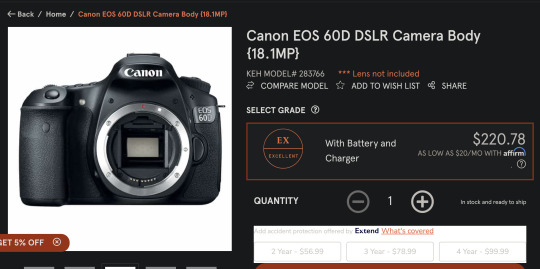
50mm f/1.8 lens

Canon 18-55mm APS-C lens (EF-S mount)

Yongnuo TTL Flash
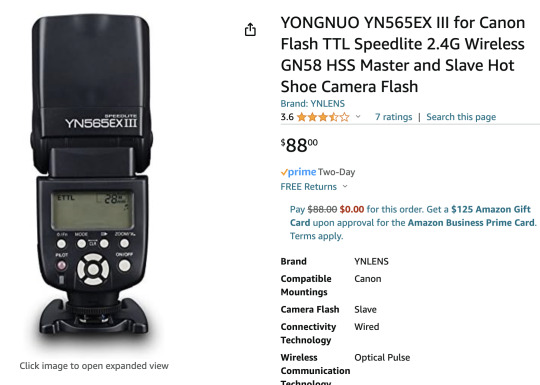
(I wouldn't recommend getting a used flash, as the Yongnuo is already a great price and you can't know if someone used the flash 100,000 times or 20 times.)
Altogether that is about $500. You can start with the 60D and the 50mm Nifty Fifty for $330 and add on the other two items later on.
My recommended full frame setup...
Full frame Canon or Nikon DSLR body
50mm f/1.8 lens (same as before)
24-70mm full frame zoom lens (full frame equivalent to 18-55mm)
ETTL Yongnuo flash (same as before)
And an example from KEH might be...
Canon 6D Full Frame DSLR


Canon 50mm f/1.8 Lens

Sigma 24-70mm Full Frame Zoom lens (EF mount)
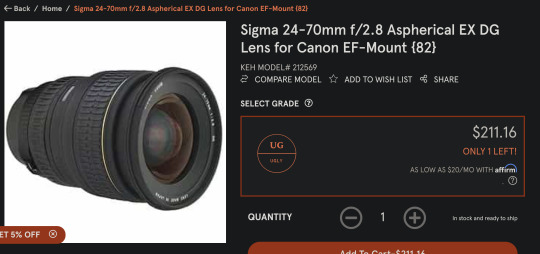
Yonguo ETTL Flash

And that would be about $800 total.
Again, you can start with just the camera and 50mm lens and add the other items later. So invest $500 initially and go from there.
And just to give a Nikon example as well...
Nikon D600 Full Frame DSLR
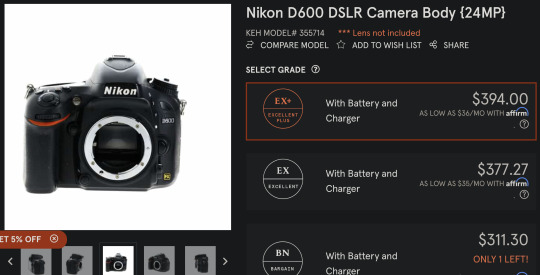
Nikon 50mm f/1.8 Lens
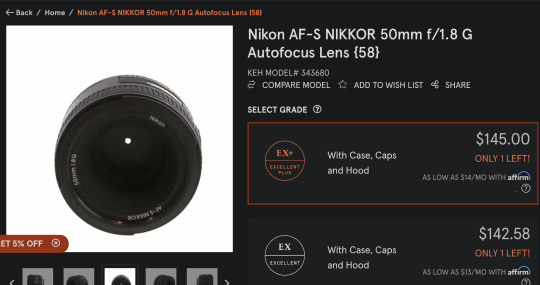
Tamron 24-70mm
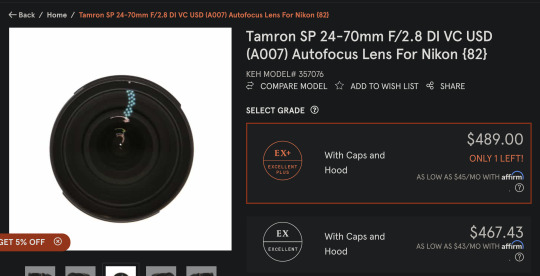

Yonguo ETTL Flash (Nikon version)

I highly recommend researching any camera body and lens before purchase. I can vouch for the items above, but you should definitely check out some YouTube videos before buying.
All of the stuff on KEH and MBP is marked down in price for aesthetic reasons. They do test everything to make sure it is functional. If you care if the camera or lens looks pristine, it will cost a little extra. But if you don't mind if it is beat to hell, you can save some money. Ugly or not, you will get the same photos out of the gear. As I said, photography stuff is built to last for a long time. Almost all repairs are due to user damage and not defects. And usually defects manifest when the product is brand new.
Oh, I forgot about the tripod!
Amazon's $35 tripod is surprisingly decent. It even got a good review on a very picky tripod review site. I recommend starting with this and then upgrading when you know more what you need out of a tripod.
Amazon 60 inch Tripod
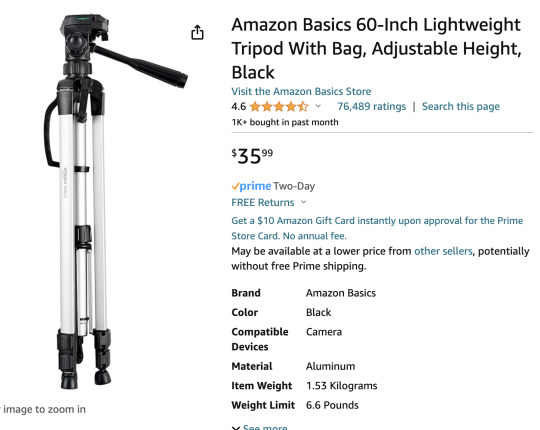
I worry I'm leaving out a lot of important information, but hopefully I can expand in the other post I am working on.
That said, if anyone is thinking of buying a camera and you are not sure about the items you selected, please feel free to message me and I will help you assess your choices. Please make sure you include a budget range when asking for buying advice.
I hope that helps. I will try to finish the more in depth post soon. And it will include tips for how to get better photos from your smartphone if you cannot afford an ILC at the moment.
Further resources...
Recipe for Landscape Photos Froggie's Encyclopedia of Lens Terms
204 notes
·
View notes
Text
im pretty sure its canon neil picks up photography on his last year at psu, so here are some of my hcs about it
nikon guy. dont ask why, but i know better than i know myself that he is a nikon guy
hates mirrorless cameras. reflex all the way
doesnt edit his photos
he would get to the most dangerous/risky/absurd spots to take the perfect shot
his favourite angle is the dutch angle. like, 95% of his photos are taken from a dutch angle
the 5% that it isnt are simmetrical pictures
okay, just picture out this one for me. neil taking a picture of andrew from the backseat (especifically the middle seat, a little to the right/shotgun side), dutch angle like 15° up to the left (or down to the right), andrew on the driver's seat with usual bored expression but with an eyebrow up driving but taking a moment to look at neil/the camera
if we are getting period accurate (like 2010/2011 when he starts) and following the nikon guy hc, i think he would have a D3100 (released in 2010 august, 500gr, 12×9×7 cm, more info here)
he cares about his camera the same way andrew cares about his car
gets really attached to his first camera (who doesnt?), he only replaces it when it broke after years of use
refuses to buy lenses and stuff for years bc it "isn't nessesary" until one day he complains in the passing he'd like to zoom in more but he already zoom the max possible with the normal lense, so the next day andrew appears with a new lense and leaves it in the counter for him. it spirals from there
the only camera paraphernalia he never and completely refuses to get is a tripod. neil josten hates tripods spread the word
only takes pictures, never videos, not even with his phone.
this one is maybe a little bit ooc, but at some point he makes a private insta account, no profile picture, no bio, no followers, not even the foxes, username is probably 12345, it just a little gallery for him to put his favourite photos. he only uses it to upload when he likes one or to look at the old pictures
prefers lighter cameras. over 1kg? thats a no
at first he was a little bit shy so he didnt went out with the camera much (also, he was somewhat afraid something would happen to it), but after a while he just takes it everywhere with him
+when he has away games and the team is not going back inmediatly to homecity, he dissapears for an hour or two to walk around the new city taking pictures
he uses having a camera to avoid social interaction. majority of people when they see you with a camera in public/in an event will leave you alone bc they think you are busy, and he definitely uses that on his favour. on the other side, there is a section of people who will see you with a camera and start bothering a lot about it. when that happens, he just lifts the camera a little bit and goes "sorry, kinda busy right now"
carries the camera like its a messanger bag
#had to do research about nikon cameras bc im a canon girlie (thank you auntie for that) so i dont know any about them#and the nikon website is so confusing#as someone who loves both photography and neil josten i was so fucking happy when i found out and i loved making this post#ignoring when i got mad at the nikon website#aftg#all for the game#nora sakavic#neil josten#aftg neil#tfc#the foxhole court#aftg headcanon#hc#hcs#headcanons#photography#trk#the raven king#tkm#the kings men#post canon#aftg extra content
80 notes
·
View notes
Note
what camera do you use? i want to dabble in animal photography as well :-)
I bought a used mirrorless! It’s a Canon R7. And I use an adapter because all my lenses are made for the mirrored cameras.
This is not, however, any sort of official comment on the Great Brand Debate. It’s just what my photography mentors thought was neat and worth buying, with an added bonus of a “smart” autofocus that tracks to animal eyes. (It does not, however, differentiate between eyes, ears, and anuses very well, leading to some entertainingly focused photos).
71 notes
·
View notes
Text
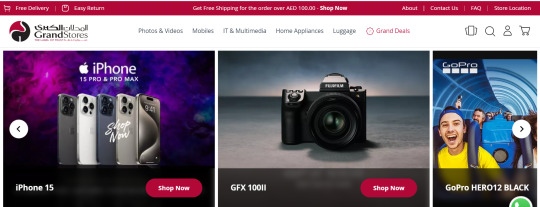
Are you gearing up for your next travel escapade? Whether you're jetting off to exotic destinations or embarking on a weekend getaway, having the right accessories can make all the difference in your journey. At Grand Stores, we understand the importance of convenience, comfort, and style when it comes to travel. That's why we've curated a selection of essential travel accessories to enhance your travel experience. From backpacks to cross-body handbags and everything in between, we have you covered.
Backpacks for Travel: A reliable backpack is a travel essential, offering both functionality and style. At Grand Stores, we offer a diverse range of backpacks suitable for all types of travelers. Whether you prefer a compact daypack for exploring the city or a spacious backpack for long-haul adventures, we have the perfect option for you. Our backpacks are designed with durability in mind, featuring reinforced stitching and high-quality materials to withstand the rigors of travel.
Cross Body Handbags: For those who prefer to travel light, a cross-body handbag is the perfect accessory. Our collection of cross-body handbags combines style and practicality, allowing you to keep your essentials close at hand while exploring new destinations. With adjustable straps and multiple compartments, these handbags are designed for maximum versatility and convenience. Whether you're strolling through bustling markets or navigating crowded streets, our cross-body handbags are sure to become your go-to travel companion.
Neck Pillow: Long flights and bus rides can take a toll on your neck and shoulders, but with a quality neck pillow, you can travel in comfort. Our neck pillows are ergonomically designed to provide optimal support and cushioning, ensuring a restful journey wherever you go. Made from soft, breathable materials, our neck pillows are gentle on the skin and easy to clean, making them the perfect travel accessory for frequent flyers and road trippers alike.
Best Backpack for Travel: When it comes to choosing the best backpack for travel, there are several factors to consider, including size, comfort, and durability. At Grand Stores, we've handpicked a selection of backpacks that tick all the boxes. From compact daypacks to spacious hiking packs, our backpacks are designed to meet the needs of every traveler. With features such as padded shoulder straps, adjustable waist belts, and multiple storage compartments, our backpacks offer the perfect blend of comfort and functionality.
Best Travel Backpack for Women: For female travelers seeking style and practicality, our collection of travel backpacks for women is the ideal choice. From sleek, minimalist designs to vibrant, eye-catching prints, our backpacks are as fashionable as they are functional. With features such as padded laptop sleeves, water bottle pockets, and RFID-blocking compartments, our backpacks are designed to keep your belongings organized and secure on the go.
At Grand Stores, we're committed to helping you make the most of your travel adventures. With our selection of essential travel accessories, you can travel with confidence, knowing that you have everything you need for a memorable journey. Shop online today at https://shop.grandstores.ae/ and start planning your next adventure in style!
#fujifilm full frame mirrorless#fujifilm mirrorless camera#full frame mirrorless camera#instant photo camera#medium format digital camera#medium format mirrorless cameras#mirrorless cameras and lenses#mirrorless cameras#mirrorless camera lenses#medium format video camera
0 notes
Text
The blog talks about Mirrorless lenses, their significance, benefits, and how to choose the right one. It highlights that while our eyes capture many things, we sometimes want to capture moments and scenes and keep them with us forever. Mirrorless lenses provide a solution to this by capturing images that the human eye cannot. They are lightweight, inexpensive, and provide high-quality images, making them a favorite among photographers. The blog also gives examples of unique images captured with Mirrorless lenses, including wild creatures, birds, streaming sports activities, and large or tall buildings. Lastly, it recommends the AVC store as the best place to buy Mirrorless lenses due to their fair balance between price and quality.
#digital camera#camera store miami#mirrorless camera#mirrorless lenses#medium format camera#dslr camera store miami
0 notes
Video
Thirsty by Veit Via Flickr: A hungry female Anna's Hummingbird is going in for a sip!
#1.4x TC#100-400#Camera#Extender#Fuji#Fuji 100-400#Fuji X-H2S#Fujifilm#Fujifilm 100-400#Fujifilm X-H2s#Lens#Mirrorless#Photo#Teleconverter#X-H2#X-H2s#XF lens#XF lenses#Bay Area#CA#California#Marin#Marin County#Mill#Mill Valley#USA#Valley#Annas Hummingbird#Backyard#Bird
2 notes
·
View notes
Note
Hey! Do you have a recommendation for a camera brand / camera for newer people getting into photography
If you’re just starting out, I’d recommend getting a refurbished or used camera from the D7100+ line. They’ve come down in price as of late and are pretty solid cameras. Just make sure to check the shutter count (cameras have a finite number of photos they can take before the shutter wears out. Shutters can be replaced but it's not always worth it)
I’d skip anything from the D3000 & D5000 lines. They’re not bad cameras but they do not have built in autofocus meaning they rely on the lens itself having autofocus. This isn’t horrible but it does limit what lenses you can use (and some of the lenses that won’t autofocus with those cameras are good AND cheap) and that can be confusing for a beginner.
As for a lens, a 50mm f/1.8, or 35mm f/1.8 is a great lens. Both lenses are inexpensive, have good quality glass, and can used for nearly everything. The 18-55mm lens that comes with cameras isn’t bad either.
I don’t shoot Canon/Sony/whatever else so I can’t give any advice there sorry!
I know mirrorless is coming down in price a little bit too and I think even the basic mirrorless models have features only the fancy mirrored cameras have (like focus shift shooting) but I don't have a lot of experience with them
37 notes
·
View notes
Text
About my new camera
Yes, I bought a new camera, but it was not a last minute decision. Well, the camera purchase was pretty much last minute after I saw a video about the camera I chose and did some research on the Web & Youtube.
For about a year I've been wondering if I should sell my Sony a7r3 body and Sony/Zeiss Sonnar T* 55mm f/1.8 lens, which came highly recommended, including by Ken Rockwell, who I also turned to for advice about my new camera. The 55mm f/1.8 lens was highly recommended; it was one of the original set of lenses for the Sony a7 line of mirrorless cameras.
I wondered about getting rid of it because, while I enjoyed using it and got some great photos with it, my 24-105mm f/4 Sony G lens also took great photos, and it covered the 55 mm range. Granted, the 55mm produced super creamy bokeh, but the 24-105 f/4 did too, though maybe not as creamy. Maybe for me, as a vegan, the 24-105mm f/4 bokeh was (is) creamy enough?
Anyway, here is one of my favorites, taken with the 24-105mm f/4 about 6 months after I bought the a7r3. (I've owned an a7r3 for over 6 years now...)

Like butter?
Back to the new camera story. About a year ago, I saw this video about "one camera/one lens."
youtube
I also watched a video where he discussed keeping camera gear down to a useful minimum "5 Reasons to Keep Your Equipment Simple feat. Documentary Photography Daniel Milnor." His insights resonated with me because I am not a gear head. I like having one lens on each camera body and not having to fidget. I like to keep it simple.
Then, about 3 weeks ago, I watched this video.
youtube
Now, I go make photos in SF often. Every once in a while I also go to Oakland, which has, at least in the 30 years I've been in living in California, a super bad reputation. I've never felt unsafe in either city walking around with my a7r3 with the medium sized 24-105mm f/4 lens on it. Granted, I carry it in the original, small, Peak Design sling bag, which I immediately christened my Audrey Hepburn camera bag because it is so elegant, especially with the little brown leather handle on top.

BTW, I also own the Peak Design messenger bag, but I almost always use this one for my camera and use the messenger bag for when I need to carry my laptop. The 5L sling bag had a bonus: Both my a7r3s with their respective lenses attached fit in this one little bag. Tight, but they fit.
Anyway, that video about feeling safe did set me to thinking, since I am getting older and walk around alone, but it also made go back to wondering if I should carry both cameras, which I rarely do anymore.
Then Adrian Vila posted this video.
youtube
And then I found his original video, about 4 years old, about the RX100 vii.
youtube
the idea of carrying a smaller camera with a 24-200 zoom intrigued me, I did some research, including visiting Ken Rockwell's site, where he highly recommended this camera (see the review here).
I was convinced, but I knew that the camera is 5 years old (and Sony has no plans of releasing a newer model), so I looked up prices for used, and if I could find them, new cameras. I eventually just opted to get a new one and am going to sell my a7r3 with the 55mm f/1.8 lens. Interesting fact: The Sony RX100 line (7 models) all have a Zeiss Sonnar T* zoom lens. Mine has a 24-200mm f/2.8-4.5 variable lens, so I am still going to have a Zeiss lens, even after I sell my 55mm Zeiss.
Then there was the coincidence that they actually had an RX100 vii in stock at the Sacramento store. I visited the Mike's Camera Website, choosing specifically the Sacramento location (they have several locations in California and Colorado) and saw they had one for sale, so I drove last there Wednesday to buy the camera.
Funny thing is, I learned they don't usually carry the RX100 vii anymore (it is, after all, discontinued) but they happened to get a delivery of one just that day from their warehouse. (I could have ordered it and it would be delivered to the store or to my apartment.) The sales person (Colton) went to check if it was ordered by someone, but no, so the camera was mine.
I explained to Colton how when I went in to buy my first a7r3 on 12-26-17, they did have it, but I wanted the 24-105mm lens, which was just released (and in popular demand) and was told they only had one, which someone pre-ordered. However, the salesperson (Taek) checked and it turned out that person had not gone in to pick up the lens or contacted them about it, and it was sitting in the store for 6 weeks, so Taek opted to let me have it. As Colton said, I have good camera Karma.
So, yes, I am going to be using a smaller camera with a smaller sensor (1 inch) that has only 20 MP as opposed to my a7r3's 42 MP in a larger full frame sensor. However, while thinking the new camera purchase over, I thought about the awesome photos I got from my Nikon D50 with its dinky 28-80mm f/2.5-5.6 lens, and the RX100 is a huge step up.
Finally, here are 2 photos of my new camera.
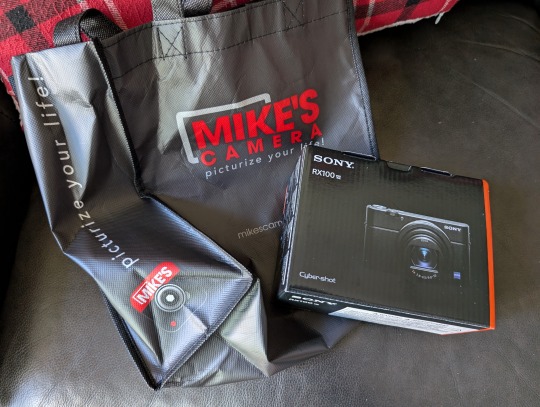

OMG, my a7r3 is dusty...
Ok. That's all for now.
The adventure continues...
50 notes
·
View notes
Text
Because I had headcanon that Color is Autistic and has developed special interests in things such as photography, travel, maybe even things like social advocacy.
Maybe even philosophy and psychology. For now, in this posts, I’ll focus on the big two: photography and traveling. (I will also touch on how Color’s physical disability, chronic fatigue, his autism, and perhaps his ptsd/ separation anxiety from Killer also effect his ability to engage in his interests in another post.)
I think he’d develop some decent if not above average technical knowledge, such as camera types and functions. Detailed understanding of different types of cameras (DSLR, mirrorless, point-and-shoot, medium format, etc.) and their specific functions.
Knowledge about various lenses (prime, zoom, wide-angle, telephoto, macro) and their applications. Mastery of camera settings like ISO, aperture, shutter speed, and how to manipulate them for different lighting conditions and artistic effects.
In-depth understanding of how aperture, shutter speed, and ISO interact to create a properly exposed photograph. Proficiency in using software like Adobe Lightroom, Photoshop, or other photo editing tools for post-processing and enhancing images.
He’d learn about artistic elements such as composition techniques, lighten and color theory. Develop a familiarity with compositional rules like the rule of thirds, leading lines, framing, symmetry, and how to creatively break these rules.
Knowledge about natural and artificial lighting, how to use light to create mood and depth, and techniques like backlighting, side lighting, and using reflectors. Understanding of how colors interact, complementary colors, and how to use color to convey emotion and direct viewer attention.
Awareness of different photography styles (portrait, landscape, macro, street, documentary, astrophotography, etc.) and genres, and what makes each unique.
Knowledge about influential photographers and their work, such as Ansel Adams, Henri Cartier-Bresson, Annie Leibovitz, and contemporary photographers.
Understanding the evolution of photography, from daguerreotypes to digital photography, and significant milestones in the field. Awareness of current trends in photography, popular styles, and emerging technologies.
And, of course, he’d develop and grow practical experiences and hands on practice. Experience with on-location shoots, managing different weather conditions, and adapting to various shooting environments.
Knowledge about how to properly maintain and clean camera equipment to ensure longevity and optimal performance. Skills in troubleshooting common issues like lens flare, sensor dust, or focus problems.
He’d have a deep enthusiasm for specific techniques or subjects he enjoys photographing, whichever or whatever you all think those could be exactly.
Likely to have personal photography projects, well-organized portfolios, and possibly an online presence showcasing their work. Extensive collection of books, articles, videos, and tutorials related to photography.
A special interest in traveling, in addition to photography, would manifest in the character in several ways, showcasing their passion and extensive knowledge about various aspects of travel. Here are some specific aspects:
For his interest in travel, he’d be very well versed in the planning and research process. Color might create comprehensive travel itineraries, meticulously planning each day's activities, routes, and schedules.
He might gradually develop an extensive knowledge about various travel destinations, including historical sites, natural landmarks, cultural attractions, and lesser-known gems.
He’d display a proficiency in booking flights, accommodations, and transportation, as well as understanding visa requirements, travel insurance, and local regulations.
An expertise in packing efficiently, knowing what to bring for different climates and activities, and how to pack photography gear safely for travel. Color is likely to show a very deep and profound appreciation for different cultures, learning basic phrases or even fluency in multiple languages to better communicate while traveling.
He’d definitely show a deep interest in trying and understanding local cuisines, knowing popular dishes, and even recipes from various regions. He’d have at least some knowledge about local customs, traditions, festivals, and etiquette to respect and immerse themselves in different cultures.
He’d certainly develop some geographical and historical knowledge, with a detailed understanding of world geography, maps, and the ability to navigate using traditional maps as well as digital tools.
Knowledge about the history of the places he visits, including significant events, historical figures, and the cultural evolution of the region.
He might maintain detailed travel logs or journals documenting his experiences, including photos, notes, and personal reflections. He’d definitely collect souvenirs, postcards, or other memorabilia from his travels; often gifting them to beloved friends.
He’d probably engage with travel communities, forums, and social media groups to share experiences and gain insights.
This special interest would possibly lead to him gaining a lot of practical skills, such as in budget management. Expertise in budgeting for travel, finding deals, and managing expenses effectively.
He might display an ability to adapt to different environments, handle unexpected situations, and problem-solve while on the go.
Although it’d probably be harder for him than most, particularly if he has a harder time handling and dealing with change—especially if the change is unexpected and unplanned.
Knowledge about staying healthy while traveling, such as understanding local healthcare options, vaccinations, and travel safety tips.
He’d like combine both interests by using his photography skills to capture stunning images of the places he visits, creating travel blogs or photo albums to document his journeys.
He might create photo essays or visual stories that capture the essence of the cultures and places he explores. Share his travel experiences and recommendations with others, possibly through writing travel guides, blogs, or social media content.
All this is to say that Killer would definitely encourage Color to come with him to explore abandoned places and ghost towns, and Color’s going to be so overjoyed he starts hand flapping. He’s going to take so many pictures, he’s going to remember it forever.
#utmv headcanons#utmv hc#killer sans#utmv#sans au#sans aus#killer!sans#killertale#othertale#othertale sans#other sans#color!sans#colour sans#color spectrum duo#colorkiller#undertale#undertale au#undertale aus#utmv au#autistic headcanon#special interest#undertale something new#undertalesomethingnew#something new#something new sans#something new au#killertale sans#canon disabled character#bad sanses#bad sans gang
36 notes
·
View notes